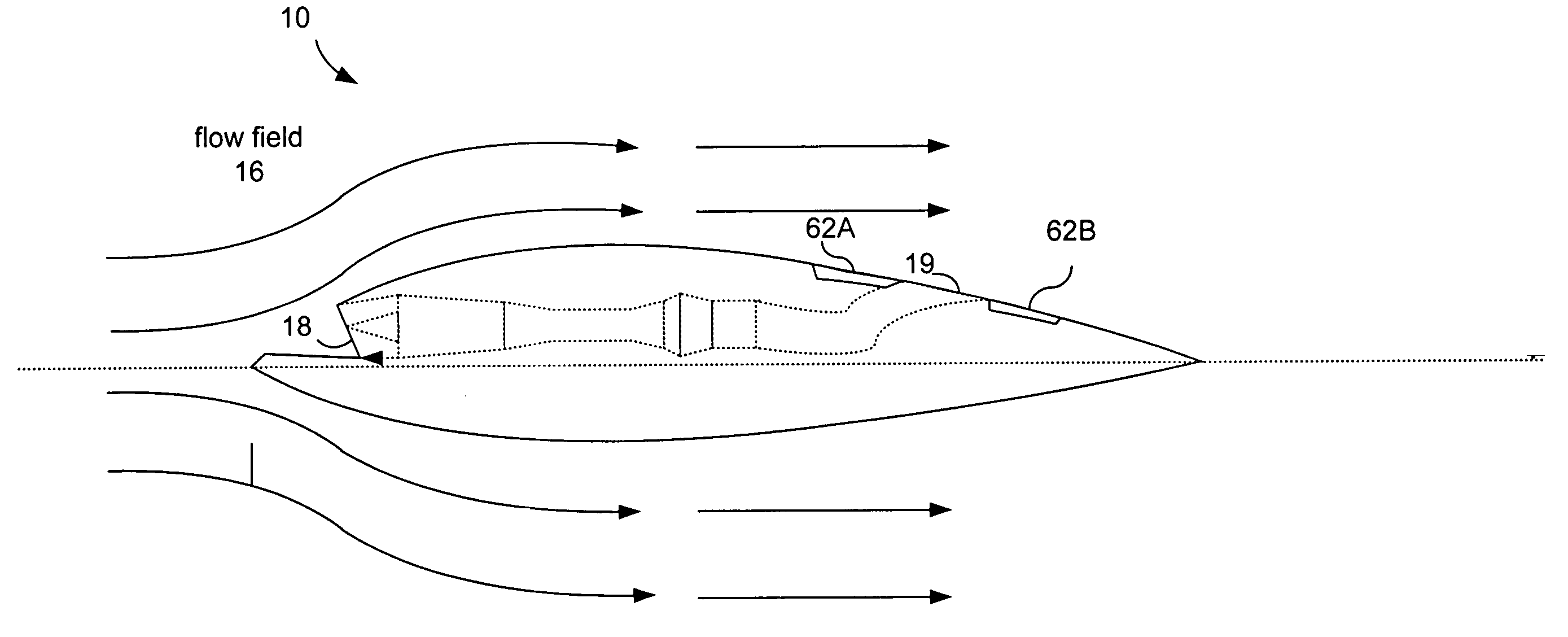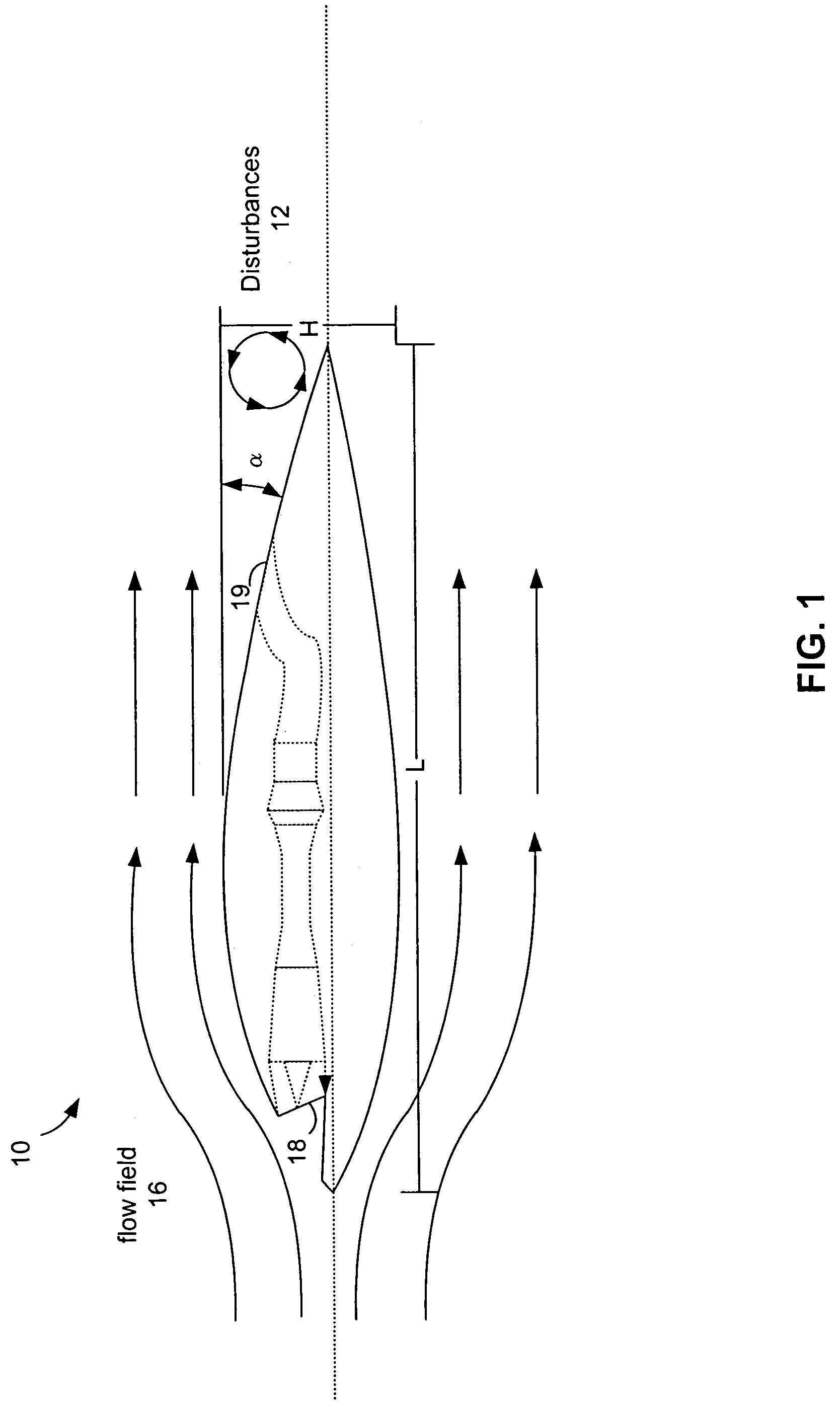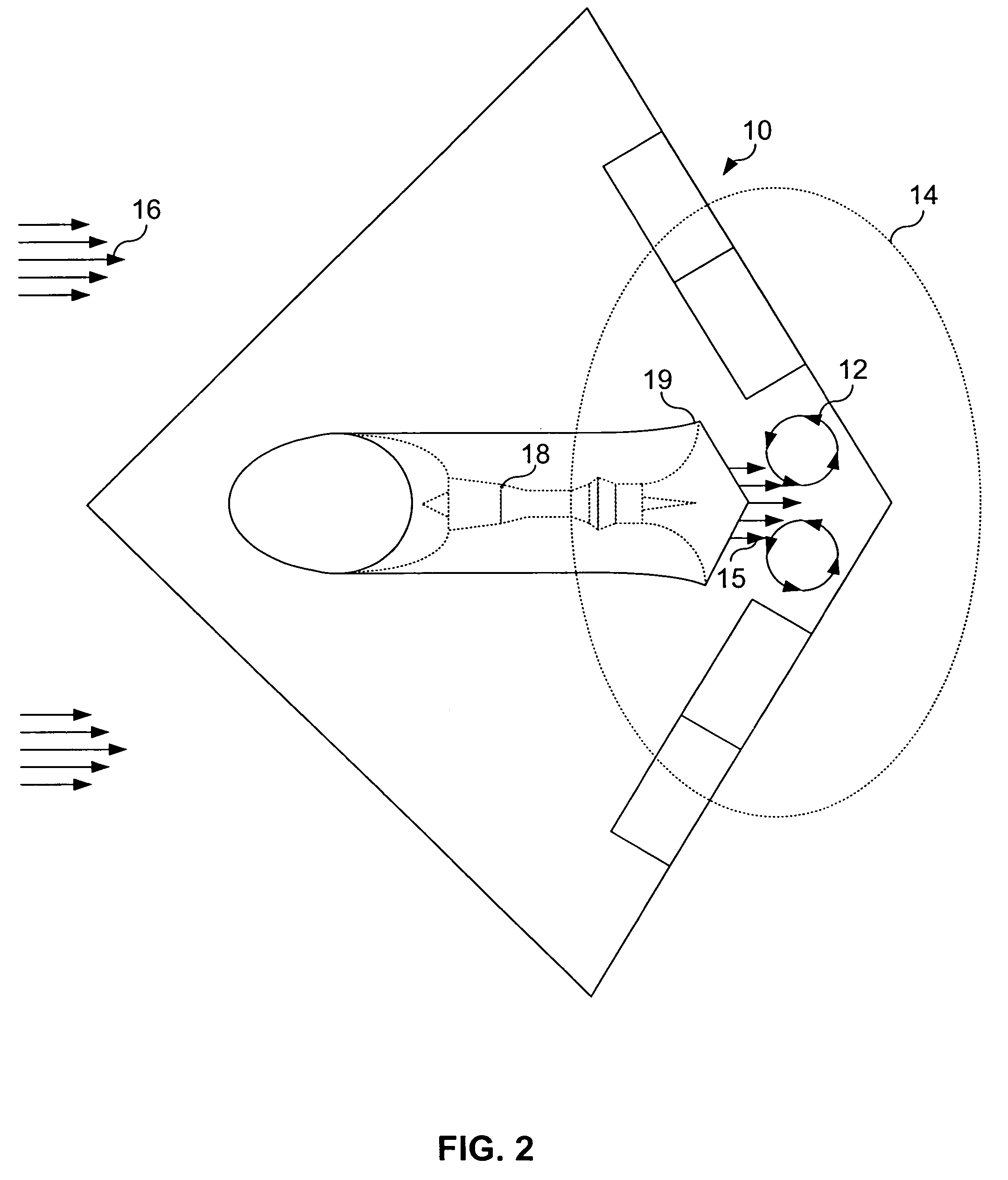Conformal aero-adaptive nozzle/aftbody
a jet engine and adaptive technology, applied in the direction of air-flow influencers, mechanical devices, transportation and packaging, etc., can solve the problems of increased vehicle drag, affecting vehicle range, persistence, and loiter capability, and achieves less drag, less weight, and more efficiency.
- Summary
- Abstract
- Description
- Claims
- Application Information
AI Technical Summary
Benefits of technology
Problems solved by technology
Method used
Image
Examples
Embodiment Construction
[0027]Preferred embodiments of the present invention are illustrated in the figures like numerals being used to refer to like and corresponding parts of the various drawings.
[0028]The present invention provides a system and method for manipulating aerodynamic or hydrodynamic fluid flow over an aft body surface that substantially eliminates or reduces disadvantages and problems associated with proper designs. More specifically, the present invention provides a system and method to prevent or minimize the growth of larger vortical structures that subject the aft body to buffeting, fatigue or jet wash through the use of arrays of flow control devices such as micro-jets or microvanes. This system and method includes the placement of micro-jet or microvane arrays on aft body surfaces bounding the primary fluid flow. These passive or active effectors can then manipulate the flow behavior of the fluid flow, influence the inception point, size, and trajectory of flow field vortices within t...
PUM
 Login to View More
Login to View More Abstract
Description
Claims
Application Information
 Login to View More
Login to View More - R&D
- Intellectual Property
- Life Sciences
- Materials
- Tech Scout
- Unparalleled Data Quality
- Higher Quality Content
- 60% Fewer Hallucinations
Browse by: Latest US Patents, China's latest patents, Technical Efficacy Thesaurus, Application Domain, Technology Topic, Popular Technical Reports.
© 2025 PatSnap. All rights reserved.Legal|Privacy policy|Modern Slavery Act Transparency Statement|Sitemap|About US| Contact US: help@patsnap.com



